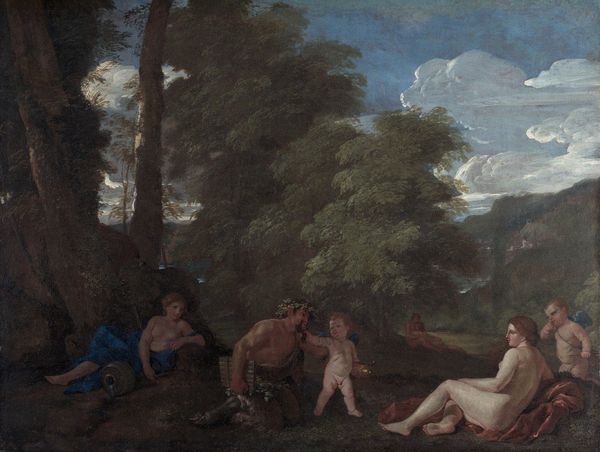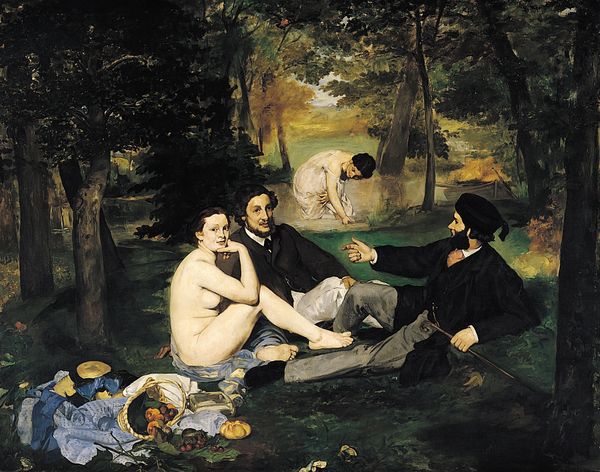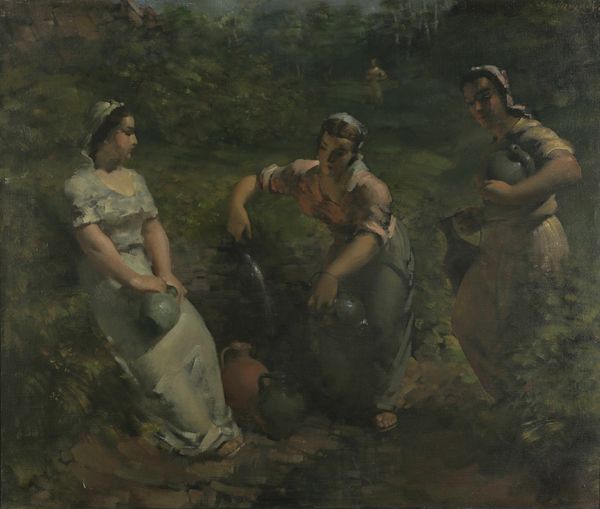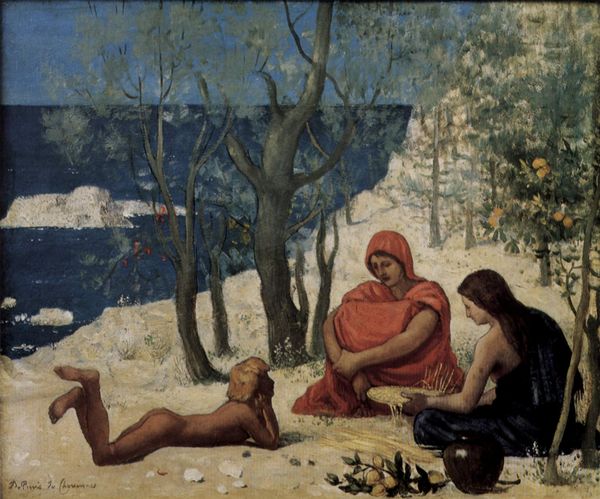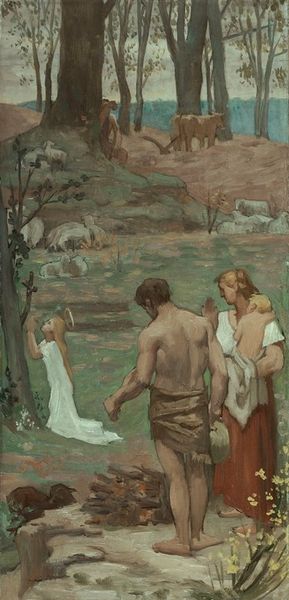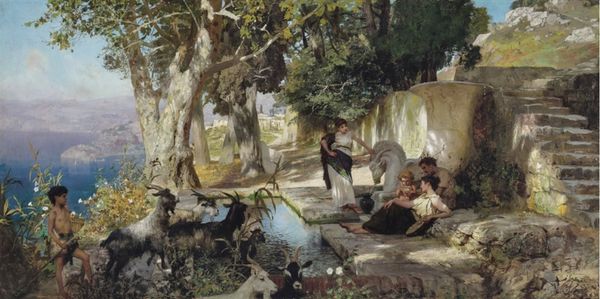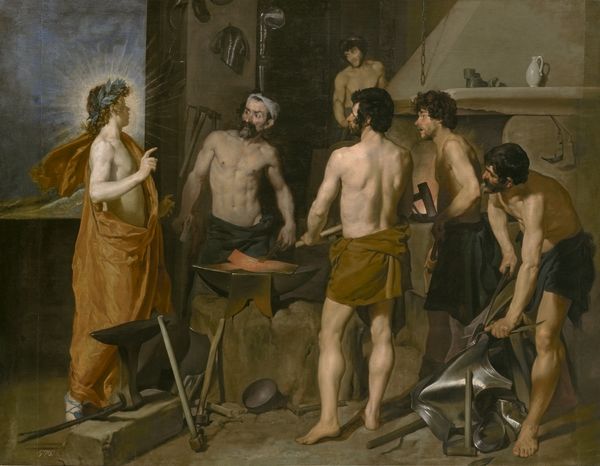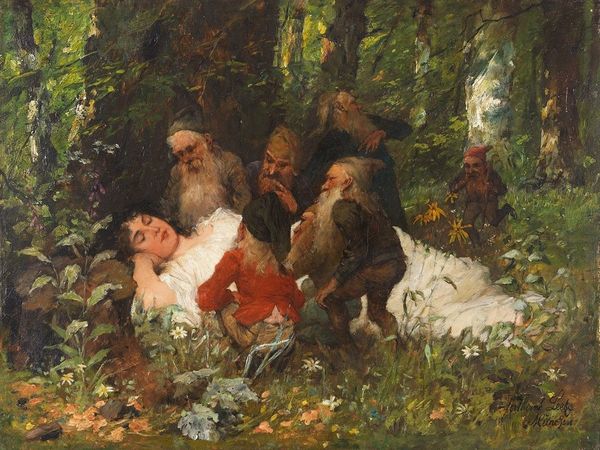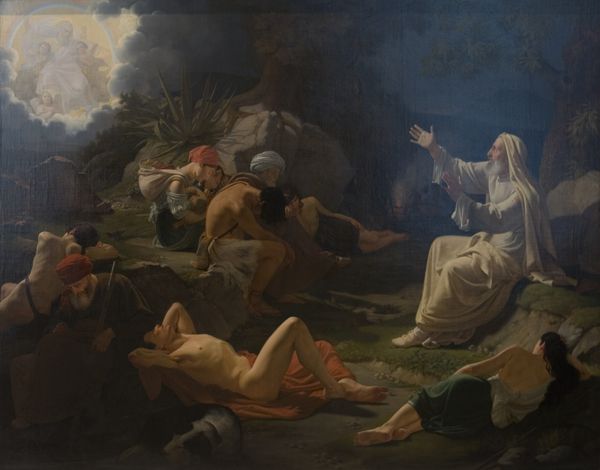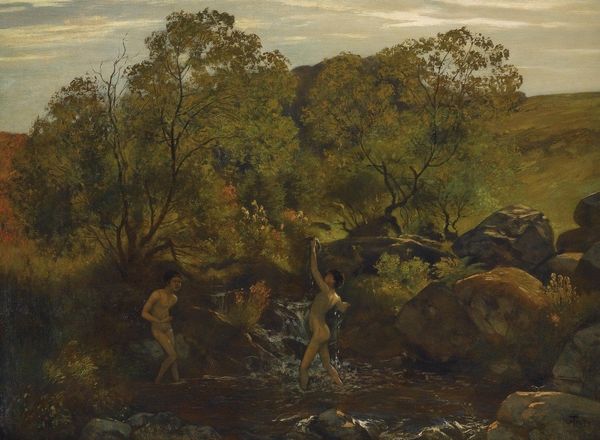
Dimensions: 249 x 307 cm
Copyright: Public domain
Curator: Rodolfo Amoedo's 1887 oil painting, "The Narrative of Philitas," on view here at the Museu Nacional de Belas Artes, presents a tableau steeped in classical allegory. Editor: It’s an incredibly serene scene at first glance, almost like a lucid dream. But something about the rendering of the figures, the stark difference between their smooth skin and the rough bark of the trees, it feels deliberate and slightly unsettling. Curator: It's rooted in the Academic tradition, prevalent in late 19th-century Brazil, a period where artists looked to classical themes to convey moral lessons and national ideals. Editor: Look at how the bodies are constructed, though. Notice how the painter clearly prioritizes a European standard of beauty for all of the subjects. We see the old man's exaggerated musculature against the other bodies' delicate forms. The idealized nudes coupled with the mythological narrative, all point toward a consumer desire for "high art" that transcends the brutal realities of slavery's ongoing presence in Brazil at that moment. Curator: The theme is Philitas of Cos, the Greek poet and grammarian. It's an allegory, indeed; a reflection on the transience of youth, beauty, and, ultimately, life. We observe the aged Philitas imparting wisdom to a younger generation amidst the idyllic landscape. Editor: Exactly! But also how class shapes whose bodies can be romanticized. How does labor intersect with this staged scene? What kind of resources were poured into making these large, representational paintings while much of the Brazilian population existed in enslavement? Who could afford them, and what kind of national identity were these historical recreations pushing onto the culture at large? Curator: You raise vital questions about the painting’s place within a specific social context. The Museu Nacional was indeed a crucial player in shaping the art scene, and such artistic output certainly had political implications at the time. It both reflected and shaped Brazil's self-image, promoting this version of erudition, an escape. Editor: I still can't help thinking of those very sharp material contrasts as metaphors for colonial violence, no matter how picturesque the composition feels at first brush. Curator: Considering all that we’ve unpacked, Amoedo's artwork remains a complicated image from a nation undergoing significant social and artistic reformations. Editor: Absolutely. These old myths take on fresh complexity when you view them with attention to the material conditions and historical forces at play.
Comments
No comments
Be the first to comment and join the conversation on the ultimate creative platform.

